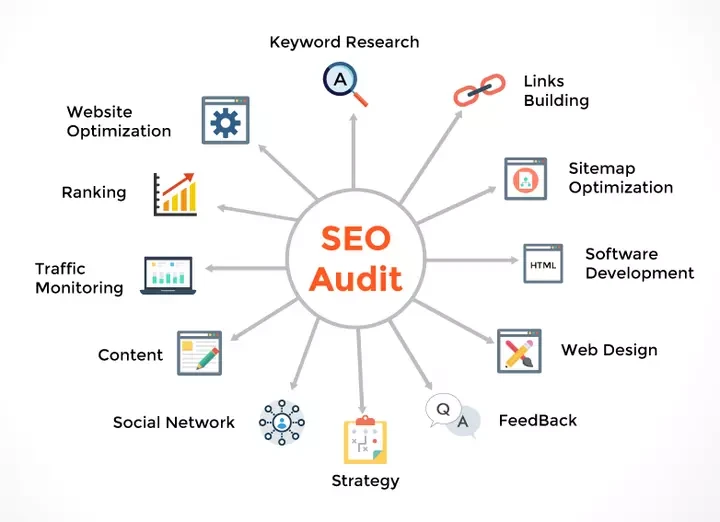Search Engine Optimization (SEO) is essential for any website to rank higher in search engine results and drive more organic traffic. Conducting a comprehensive SEO audit is crucial to identify areas of improvement and develop a solid strategy to enhance your website’s visibility and performance. In this article, we will guide you through the steps of conducting a thorough SEO audit for your website.
1. Set Clear Objectives
Before diving into the audit process, it is important to define your goals and objectives. Determine what you want to achieve with your SEO audit, whether it’s improving website rankings, increasing organic traffic, or optimizing user experience. Setting clear objectives will help you prioritize tasks and focus on areas that need the most attention.
2. Analyze Website Performance
Start your SEO audit by analyzing your website’s performance using tools like Google Analytics and Google Search Console. Check key metrics such as traffic sources, bounce rate, average session duration, and conversion rates. Identify pages with high traffic and low conversion rates to optimize them for better performance.
3. Conduct Keyword Research
Keyword research is a crucial step in any SEO audit. Identify relevant keywords for your website using tools like SEMrush, Ahrefs, or Moz Keyword Explorer. Look for keywords with high search volume and low competition to target in your content. Make sure to include long-tail keywords and related terms to improve your website’s visibility.
4. On-Page SEO Analysis
Perform a comprehensive on-page SEO analysis of your website’s content, meta tags, URLs, headings, and internal links. Ensure that your content is optimized for target keywords, and meta tags are well-structured and descriptive. Check for broken links, duplicate content, and other technical issues that may affect your website’s ranking.
5. Technical SEO Audit
Check the technical aspects of your website, including site speed, mobile-friendliness, schema markup, and XML sitemap. Use tools like Google PageSpeed Insights and Mobile-Friendly Test to analyze your website’s performance on different devices. Ensure that your website is properly indexed and structured for search engines to crawl and index your content effectively.
6. Backlink Analysis
Backlinks are an essential factor in SEO, as they help improve your website’s authority and credibility. Analyze your website’s backlink profile using tools like Ahrefs or Majestic SEO. Identify high-quality backlinks from authoritative websites and disavow toxic links that may harm your website’s ranking. Focus on building quality backlinks to improve your website’s SEO performance.
7. Competitor Analysis
Conduct a competitor analysis to identify strengths and weaknesses in your competitors’ SEO strategies. Analyze their keywords, backlink profile, content strategy, and on-page optimization. Learn from their successes and failures to develop a winning SEO strategy for your website. Keep an eye on their tactics and adapt them to your own strategy for better results.
8. Create an Action Plan
Based on the findings of your SEO audit, create an action plan with clear goals, timelines, and responsibilities. Prioritize tasks based on their impact on your website’s performance and start implementing them one by one. Monitor progress regularly and make adjustments as needed to ensure continuous improvement in your website’s SEO performance.
Conclusion
Conducting a comprehensive SEO audit is essential for improving your website’s visibility, traffic, and ranking in search engine results. By following the steps outlined in this article and using the right tools and techniques, you can identify areas of improvement and develop a solid SEO strategy to achieve your goals. Remember to monitor your website’s performance regularly and stay updated with the latest trends in SEO to stay ahead of the competition.
Implement these strategies today and watch your website climb the ranks in search engine results!
